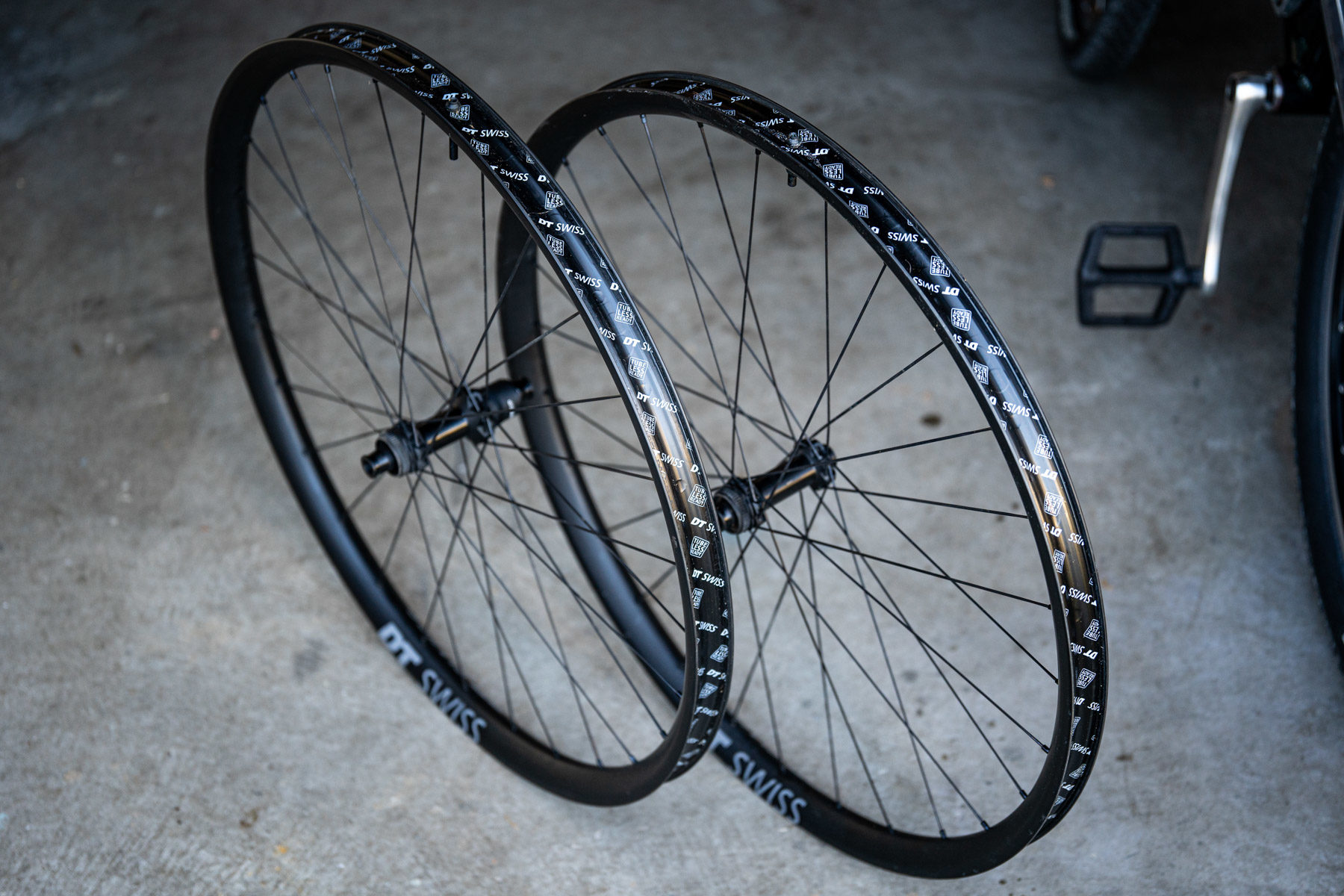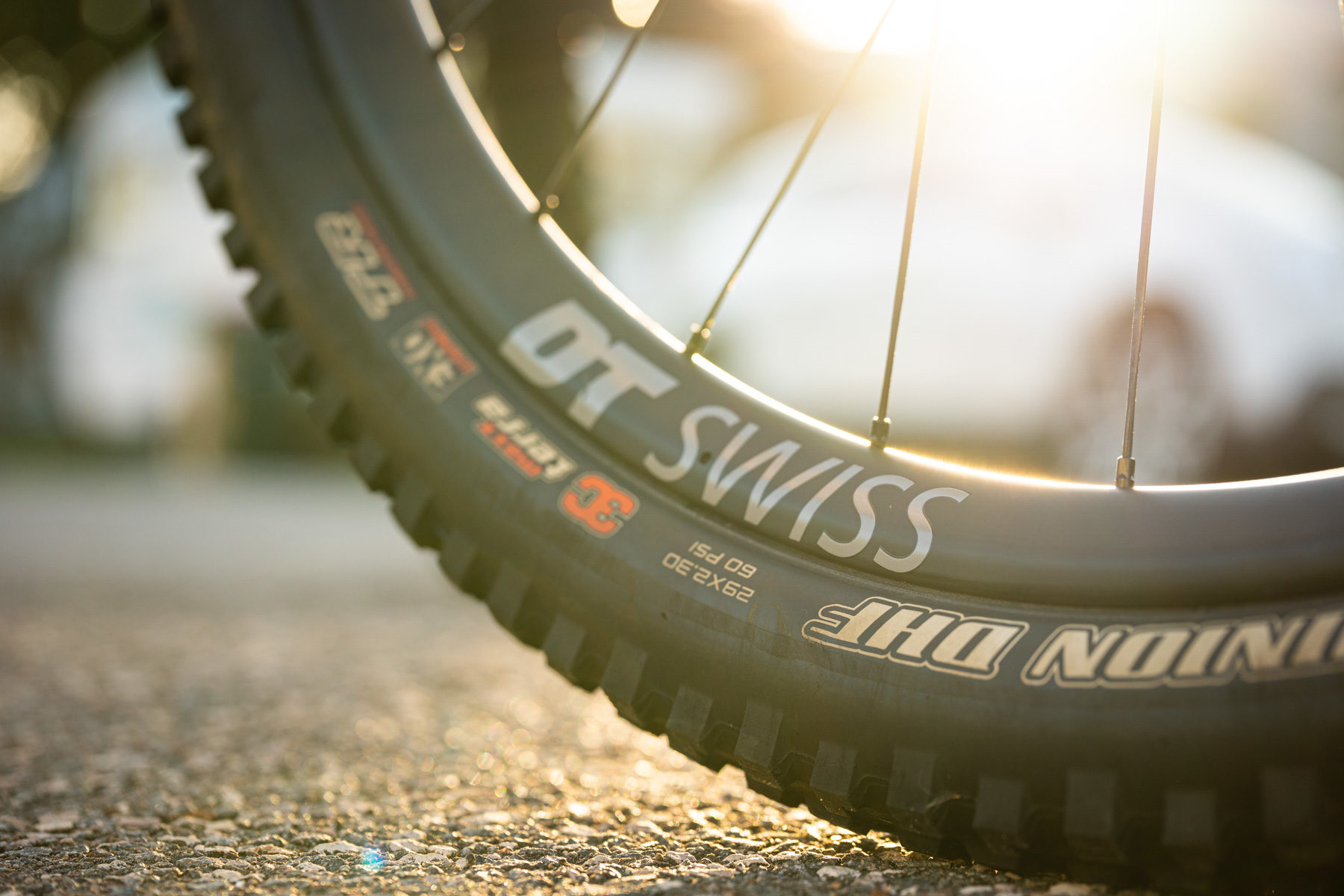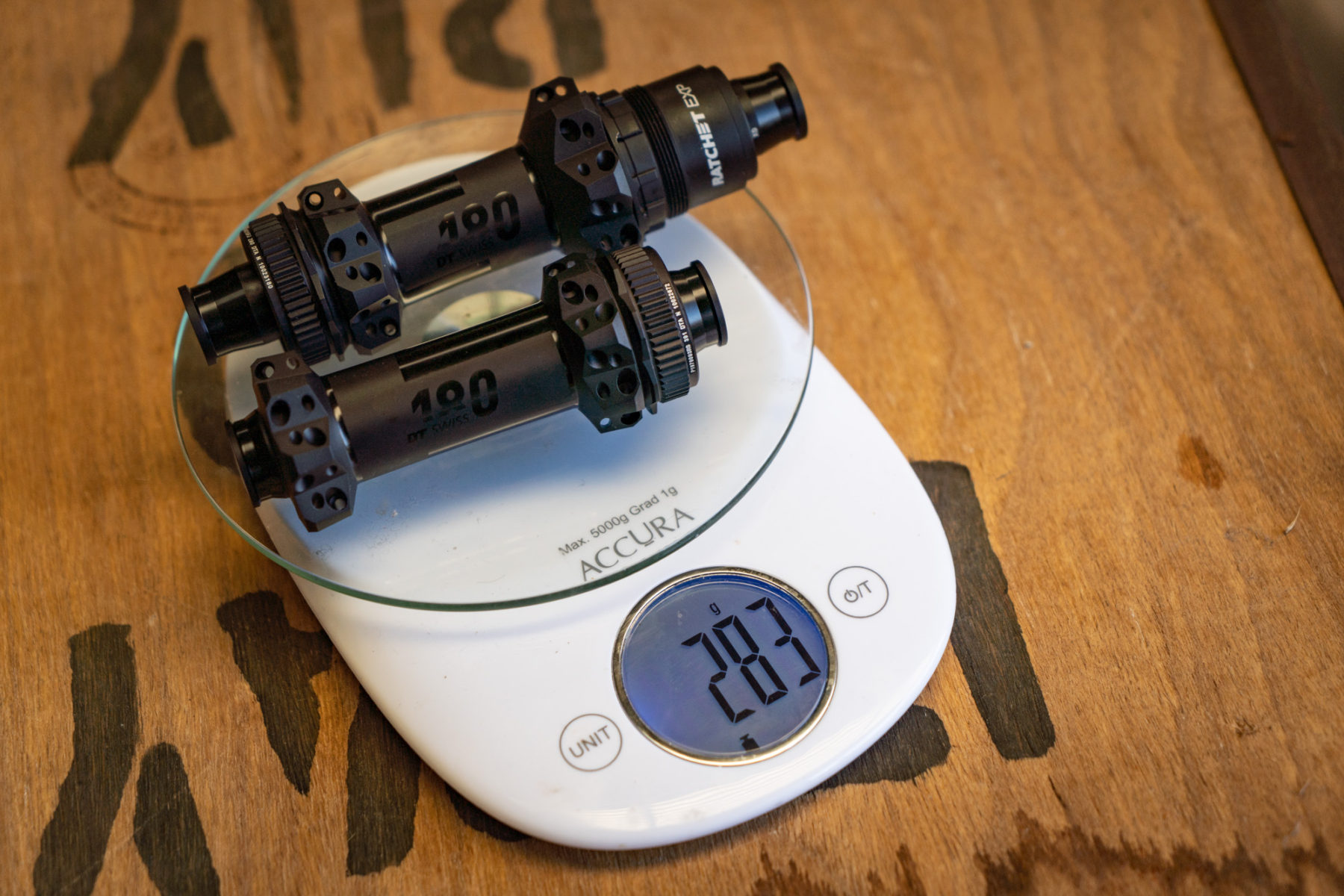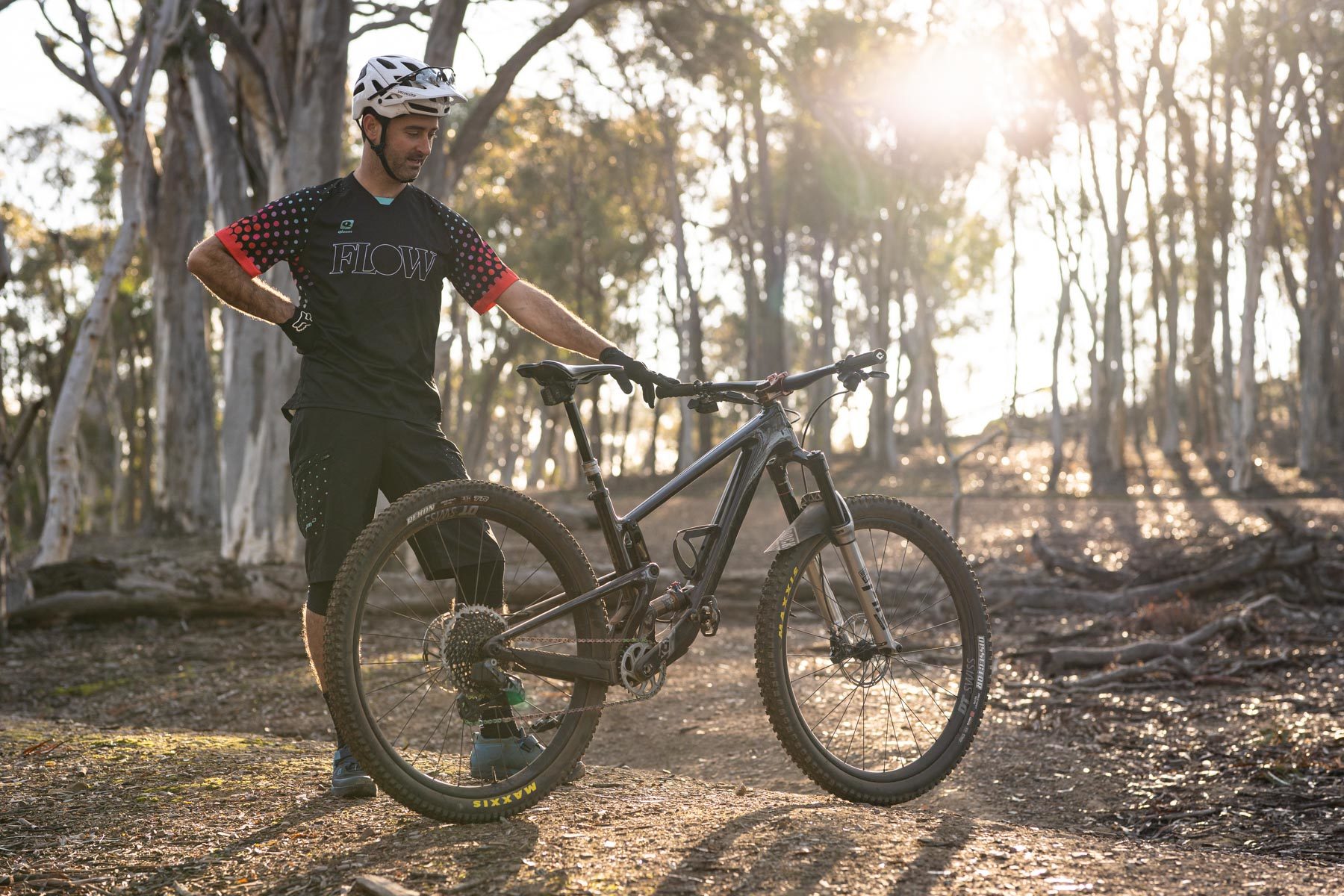Mick & Wil Review Two Different DT Swiss XRC 1200 Wheelsets
When it comes to high-end carbon wheelsets, it doesn’t get much more premium than these DT Swiss XRC 1200s. As the lightest mountain bike wheelset from DT Swiss, the XRC 1200 is a high-performance set of hoops that’s designed for World Cup-level XC racing. The no-holds-barred build features straight-pull spokes, an ultra-premium 180 hubset, and carbon fibre rims that are available in two different widths. Are they for the racing elite only though? We’ve been testing two versions of the XRC 1200 Spline wheelset in two decidedly less-racy applications to find out.

First Though, What Do The Letters & Numbers Mean?
Yeah so we won’t blame you, DT Swiss’s naming system isn’t exactly intuitive. For the most part, the mountain bike wheel range is separated into riding disciplines (so XR = Cross Country, XM = All Mountain, and E = Enduro). There are a couple of exceptions, but we’ll choose to ignore those because they’re confusing and stupid. If DT Swiss is listening; can we kindly request that you tidy up the way you name your wheels? Ta.
Most of the complete wheelsets use alloy rims, but if you spot a “C” in the name, that means it has carbon rims. Moving past the letters, then there are some numbers. You may suspect that these numbers would indicate the wheelset weight, but you would be wrong. Basically the lower the number, the better the wheelset is. You know, a bit like golf.
Right, so now that you’re fluent in the bizarro language of DT Swiss, here are the four models in the cross-country wheel range;
- XRC 1200 Spline: Carbon fibre rims & 180 hubs (1,411g) – $3,099 AUD
- XRC 1501 Spline: Carbon fibre rims & 240s hubs (1,544g) – $2,349 AUD
- XR 1700 Spline: Alloy rims & 350 hubs (1,672g) – $1,199 AUD
- X 1900 Spline: Alloy rims & 370 hubs (1,860g) – $719 AUD
Testing The DT Swiss XRC 1200 Wheelset
It’s the top-end XRC 1200 that we’ve been testing for the past three months. Wil’s been rolling on the Spline 25, and Mick’s been testing the Spline 30. Each wheelset is built with the same hubs, spokes and nipples, but the carbon rims are different between the two – the Spline 25 has a 25mm inner rim width, and the Spline 30 has a 30mm inner rim width.
Why would you choose one over the other? Read on for a closer look at the specs, along with Wil & Mick’s experience with these snazzy carbon hoops.

Specifications
- Carbon fibre rims
- Hookless & tubeless ready profile
- Internal rim width: 25mm (Spline 25) & 30mm (Spline 30)
- DT Swiss 180 hubs
- SINC ceramic cartridge bearings
- Ratchet EXP freehub system w/36 points of engagement
- Wheelset supplied with SRAM XD & Shimano Micro Spline freehub bodies
- 28 x DT Swiss Aero comp straight-pull spokes (front)
- 28 x DT Swiss Aerolite straight-pull spokes (rear)
- DT ProLock Squorx alloy nipples
- Max recommended rider weight: 110kg
- Includes 6-bolt rotor adapters, tubeless tape & valves, spoke tool & wheel bag
- Claimed weight: 1,411g (Spline 25) & 1,480g (Spline 30)
- RRP: $3,099 AUD

High-Zoot Hubs
The heart of any wheelset is of course the hubs. On a mountain bike, rims take an absolute beating, and spokes can be ripped out by a bent derailleur or tree branch. Hubs on the other hand? Well they’re in a pretty safe location, and that means they can potentially outlast the rest of the wheel several rebuilds over. The moral of the story? Good hubs are worth spending the money on. And it doesn’t come much gooderer or spendier than the DT Swiss 180.
The moral of the story? Good hubs are worth spending the money on. And it doesn’t come much gooderer or spendier than the DT Swiss 180.
The 180 hubs are no doubt one of the biggest appealing factors of the XRC 1200 wheelset. Given the hubs sell for about $1,200 AUD on their own, they’re a big contributing factor to the overall price. However, they’re insanely light – 97g for the front & 186g for the rear – so they’re also responsible for the low wheelset weight.

Using low-profile alloy hub shells, the 180 hubs come loaded with DT’s own SINC ceramic cartridge bearings, and the Ratchet EXP freehub mechanism. In a nut(hub)shell, the Ratchet EXP freehub is functionally similar to the previous Star Ratchet design. By integrating one of the ratchet plates into the hub body though, it ends up being lighter, simpler with less moving parts, and it creates a stiffer overall structure by widening the bearing placement inside the hub. It’s a neat system, and if you’ve not checked it out already, be sure to see our tech deep dive on the Ratchet EXP system here.
Using low-profile machined alloy hub shells, the 180 hubs use a Centerlock rotor spline, and come loaded with DT’s own SINC ceramic cartridge bearings and the new generation Ratchet EXP freehub mechanism.
They’re Still Easy To Pull Apart
The hubs feature tool-free end caps with beautifully machined lips, which makes them a cinch to pull apart. It also means that it’s still fairly easy for the cassette to come off the hub entirely – oh say, if you have the wheel out of the frame on the side of the trail while you’re bashing the tyre on the ground to try and get sealant to work its way to a pinhole puncture. If you find yourself in that predicament, take care so the cassette doesn’t fall off, sending the greasy outboard ratchet ring and spring into the dirt. That definitely didn’t happen to us.
The tool-free system means it’s also easy to swap freehub bodies around, and DT Swiss does actually include both SRAM XD and Shimano Micro Spline freehubs with the complete wheels, which is nice to see given they’re pretty expensive to buy separately. You also get Centerlock adapters for running 6-bolt rotors, along with wheel bags, and a cute little red spoke tool.

Wil & The DT Swiss XRC 1200 Spline 25 Wheels
For the past few months I’ve been testing the Spline 25 wheelset on my Santa Cruz Blur, which has been configured as a 10.1kg full suspension XC race rocket. Confirmed weight for the wheelset is 1,460g including tubeless tape and valves. That’s damn light and pretty close to DT’s claims.
Astonishingly, it isn’t the lightest wheelset I’ve tested though. In fact, it’s a ways off of the 1,278g Roval Control SL wheelset that comes on the new Specialized Epic. It’s also not as light as the Stan’s NoTubes Podium SRD wheelset (1,287g claimed) or the Bontrager Kovee XXX (1,290g claimed). Bear in mind that the Roval and Bontrager wheels only use 24 spokes per wheel, and the Stan’s wheelset is 24 front and 28 rear. In comparison, DT sticks to 28 spokes front and rear with a more conventional 3-cross lacing pattern.

The 25mm inner rim width is also starting to look a little narrow in the fast-moving wheel market. Even World Cup racers are starting to move to wider rims – Nino Schurter is racing on the XRC 1200 Spline 30 with 2.4in tyres, and Jolanda Neff is on the Bontrager Kovee XXX, which has a 29mm inner rim width. Not everyone wants to run wider tyres though, and that’s why DT Swiss offers both options. Personally, I still see a place for 25mm rims, especially when using sub-2.3in rubber.
For my test wheels, I’ve fitted a Pirelli Scorpion M & R combo (2.25in), Goodyear Peak XCs (2.25in), and more recently, a set of Schwalbe Racing Ray/Ralphs (2.35in). The hookless rims come pre-taped for tubeless setup, and all of those tyres have inflated easily with a floor pump.
Light-Footed & Responsive
Compared to the Hunt Race XC Wide wheelset I previously tested on this bike, the XRC 1200 wheelset dropped just 57 grams. However, the difference in ride quality was pronounced. For a start, the XRC 1200s roll beautifully well thanks to the low-drag hubs and high quality bearings. Acceleration is prompt thanks to the stiffer carbon rims and the taut, straight-pull build. DT Swiss is known for its enviable proficiency when it comes to building wheels, and that skill is most definitely on show with these beautiful hoops. Overall handling precision is excellent, and is easily the most noticeable attribute of upgrading to these wheels.
The XRC 1200s don’t provide as much vertical compliance as the alloy wheels they replaced – they are for sure stiffer in all directions. They’re also not as comfortable as the ultra-smooth Podium SRD wheelset, but I can’t think of much else that matches that Stan’s wheelset when it comes to radial compliance. Indeed in the broader world of carbon XC wheels, I wouldn’t describe the XRC 1200s as being harsh at all – especially compared to some of the ENVEs, Bontragers and Rovals I’ve ridden in the past. It does feel like the industry as a whole has moved on from deep-section rims and the ‘STIFFER IS BETTER!‘ mantra of late though, which is a good thing, especially for short-travel bikes that tend to be pretty firm already.

Wider Isn’t Always Better
Part of the compliance does come down to the 25mm inner rim width, which gives the tyre a more rounded profile compared to running the same tyre on a wider rim. The result on the trail is more comfort, with the springier tyre helping to dampen vibrations and impacts. In my experience, narrow tyres on wide rims tend to feel a little wooden and dead. Not so here. The XRC 1200s are lively and whippy, and paired to a 2.25in tyre they’ve handled my local rock-infested singletrack with ease.
I would say a 2.3in tyre is at the upper limit for this rim though. Go too wide, and you’ll start to experience more wobble and casing roll on hard-packed corners and high-speed berms. I experienced a bit of that with the 2.35in Schwalbe tyres. You can mitigate that sensation by running higher pressures, but the tyres tend to deflect and rebound with less control, while also passing on more feedback from the trail. If you typically use 2.35in tyres or bigger, then you’ll be wanting to look at the Spline 30 wheels that Mick’s been testing.
Race-Day Weight, Trail-Tough Reliability
As for my favourite attribute of these wheels? It’s gotta be the fact that they just continue to do their job day in, day out, with very little fuss. I’ve so far written off three separate rear tyres on the XRC 1200 wheelset. Despite those rim-crunching fatalities, I’m still yet to inflict any noticeable damage to the carbon rims, and both wheels remain tight and true. No loose spokes, no damaged nipples, and the hub internals remain spick and span. That’s really impressive, and it goes to show that the XCR 1200s aren’t just a race-day only wheelset. In fact, I’d happily trail ride on these all-year round, which perhaps goes some way to justifying the hefty price tag.

Mick & The DT Swiss XRC 1200 Spline 30 Wheels
I’ve been testing the same wheelset as Wil, albeit with the wider Spline 30 rim. These utilise the same 25mm depth as the Spline 25 rims, but they’re wider – 36mm external and 30mm internal. The broader width sees them better suited to bigger tyres from 2.35-2.6in wide.
I fitted the XRC 1200 wheels to my Santa Cruz Tallboy, as I wanted to see how hard I could push them on an aggro trail bike, versus a strictly XC application. I also wanted to drop some weight off the bike, which was previously wearing a ZIPP 3Zero Moto wheelset. Those wheels tip the scales at a hefty 1,960g, though they are built for EWS punishment. In comparison, the DT Swiss XRC 1200 Spline 30 wheels came in at 1,525g on our Scales Of Broken Dreams™. I can tell you that dropping 400g off your wheelset is quite the experience, and more effective than EPO. Well, so I’ve been told. But it isn’t just about weight.


Dancing On The Trail
Although the internal width is the same between these two wheelsets, the on-trail experience couldn’t be more different. The XRC 1200 wheelset is noticeably sharper and more positive on the trail. Whereas the soft and more flexible ZIPPs tended to sap energy, the XRC 1200s feel more enthusiastic and whippy.
They do transmit more chatter through the bike at high speed, but again, I’m comparing them to perhaps the most compliant wheelset on the market. Like Wil, I didn’t find the XRC 1200s to be overly harsh. I’ve also ridden the previous generation Bontrager Line Pro 30 wheels on my Tallboy (not the new ones mind you), and those offer that classic big-depth carbon wheel sensation where they feel fast and feel light, but are harsh and pingy to ride. The DT’s are not harsh and pingy, they’re much more refined than that.

Get The Right Tyre
To begin with, I setup the XRC 1200s with 2.3in Maxxis Minion DHF/DHR II tyre combo. They rode fine, but I found the tyre profile a bit square – those 2.3in Minions work best on a rim around 25-27mm wide. I’ve since fitted a 2.4in Wide Trail Dissector on the front and a matching Rekon on the back, which are purpose-built for 30mm rims. The listed width is only 0.1in greater, but it’s the casing construction that differs, with the Wide Trail tyres offering a better profile, with a more natural curve to the crown and sidewalls. As well as bringing back some compliance, this helps to put the shoulder knobs in more regular contact with the ground, and cornering is far more predictable as a result.
The 2.4in Wide Trail tyres use a different casing construction that’s optimised for wider rims. Compared to the 2.3in tyres that I had on before, these have a much better profile with a more natural curve to the crown and sidewalls.
Also like Wil, I’ve not had any problems with my test wheels. Despite being designed for XC racing, they’ve held up mighty fine to a barrage of technical trail riding. The hubs are spinning beautifully, and the Ratchet EXP freehub emits a deep, metallic purr as it freewheels. It’s chunkier in its sound compared to a pawl-based freehub, and it’s a little more bass-y than the previous Star Ratchet freehub – more like a piano than a snare drum. One thing worth mentioning is that you only get a 36 points of engagement from the Ratchet EXP freehub. That suited us just fine, but high engagement lovers may wish to upgrade to the 54T ratchet plates to increase pick-up.

Carbon Coverage
As mentioned above, we encountered zero durability issues with our test wheelsets. The fact that they were pre-used demo wheels when they arrived to us is a testament to their strength and build quality. As such, we’ve got no qualms in recommended these wheels for racers and riders who are hard on their gear.
Since receiving our test wheelsets though, DT Swiss has updated the warranty policy for its carbon wheelsets, and it’s a big enough deal for us to point out for prospective buyers. Whereas wheels purchased before 2020 came with a standard 2-year warranty to cover any material and workmanship defects, the new policy now gives DT Swiss carbon wheel owners a lifetime warranty. Furthermore, if you smash up a wheel on the trail during the first 10-years of ownership, even if it’s just from your hopeless line choice, DT Swiss will offer to sort it out for a flat-fee of €249 under its ‘Fair-Share Policy’.
While it isn’t quite as generous as the crash replacement schemes offered by Bontrager, Roval and Reserve, it’s still damn good and surely welcome news for riders who are considering dropping three grand on a new carbon wheelset. You can read all the ins and outs of the DT Swiss warranty policy here.

Flow’s Verdict
Let’s not beat around the bush – three grand is a lot of cash for a set of mountain bike wheels. If the number “3” is making you shudder, it’s worth noting that DT’s own XRC 1501 wheelset isn’t that much heavier, while being about $600 cheaper. And if you’re on more of an alloy budget, the XR 1700 wheelset is even sharper on price while still being pretty competitive on weight.
If it’s the best that you demand though, then the DT Swiss XRC 1200 is about as premium as it gets when it comes to a lightweight carbon mountain bike wheelset. No, they don’t come cheap, but then they are playing in a similar class to the likes of ENVE, Reynolds, Roval, and ZIPP. The key difference with these wheels is that DT Swiss manufactures every single component of the wheel – the rim, the spokes, nipples, hub shells and internals – and they’re meticulously built by a company that has basically been founded upon the art of wheel building.
The result is a highly refined ride quality that delivers a strong performance on the trail. The XRC 1200s are lightweight, responsive and direct, but they’re also mighty tough too. This is certainly no delicate race-day-only wheelset. Along with the quality hub bearings, easily serviceable freehub mechanism and the new lifetime warranty, the XRC 1200s are built for the long haul, and that’s exactly what you’re paying for.

















